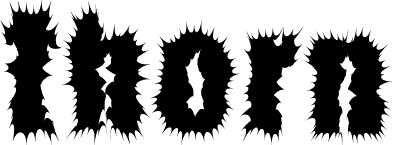

though it was still never pronounced like it. As printing hadn’t come about in Europe yet, most literature was handwritten, and in some writers’ scripts, the thorn was much more like a y. It lost its ascender (the little bit that sticks out on top), coming to resemble something between a y and a p. As the thorn became less popular, its shape gradually began to change too. The thorn began to fall out of favour in English in the 14th century, as more and more people began to use th to represent the /θ/ and /ð/ sounds the thorn was used for, as we still do today (though the thorn is still used in modern Icelandic. Huh!īut why use a y instead of this thorn you refer to, I hear you ask? Well, I’ll tell you that too. So Ye Olde English is actually pronounced the same as The Old English. It could be used to represent two similar consonant sounds: /θ/, as in thing, or /ð/, as in the. It is in fact, an old letter called a thorn (well, to be pedantic, it’s a y substituting for a thorn) which was used in Old and Middle English. Derived from an ancient Nordic rune, the thorn normally looks like this: Þ, þ (upper and lower case respectively). It seems reasonable to assume (as I did for a long time) that Ye is pronounced with a y sound (as in you) at the beginning of the word, but here’s the thing: How do you pronounce that phrase? Some people might argue about whether the e in Olde should be pronounced, but no-one would dispute how to pronounce the other two words.


 0 kommentar(er)
0 kommentar(er)
